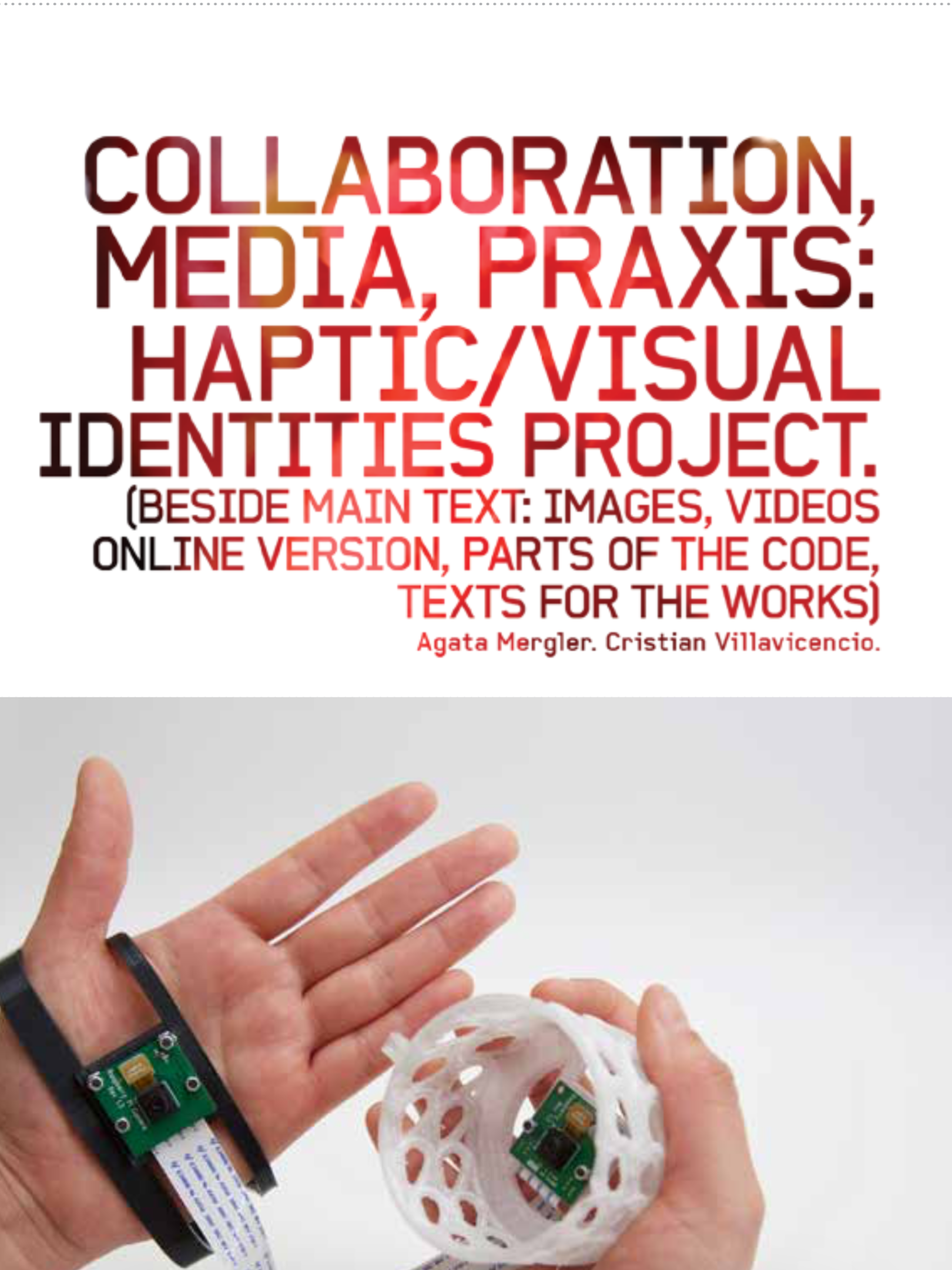
Publicado 2017-11-01
Palabras clave
- Háptico,
- sentidos,
- investigación,
- tecnologías,
- arte
Cómo citar
Resumen
The Haptic/Visual Identities project is a combination of art practice with media and critical theories, along with the development of tools (DIY technology). As such, it is also an attempt at combining practical and theoretical knowledge in one all-encompassing process. The questions and interests that lead us, as well as the different backgrounds we bring to our collaboration create a situation of synchronically pursued different paths of approaching the production, dissemination and presentation of the work. This means no clear institutional context, but at the same time freedom from necessity to adjust to or even to produce for a specific setting, e.g. academic article, art gallery, film display. Our work does not have clear boundaries in what in it is academic, what is visual, what is performative, what is technological, what is critical thinking, therefore we found ourselves in need for a framework incorporating more than one of these parts.
Descargas
Citas
- Crary, J. (1992). Techniques of the observer: On vision and modernity in the nine- teenth century. Cambridge, Mass.: MIT Press.
- Deleuze, G., & Guattari, F. (1987). A thousand plateaus: capitalism and schizophrenia. Minneapolis: University of Minnesota Press.
- Deleuze, G., & Guattari, F. (1986). Kafka: toward a minor literature. Minneapolis: University of Minne- sota Press.
- Flusser, Villem. (1984). Towards a philosophy of photography. Gottingen, Germany: Euro- pean Photography.
- Flusser, V. (2000). Towards a philosophy of photography. London: Reaktion Books.
- Groys, B. (2012). Under Suspicion a phenomenology of media. Translated by C. Strathausen. Columbia University Press. New York.
- Hayles, K. (1999). How we became posthuman: virtual bodies in cybernetics, literature, and informatics. Chicago, Ill: University of Chicago Press.
- Haraway, D. J. (1991). Simians, cyborgs, and women: the reinvention of nature. New York: Routledge.
- Marks, L. U. (2000). The skin of the film: Intercultural cinema, embodiment, and the senses. Duke University Press.
- Merleau-Ponty, M. (2012). Phenomenology of perception. Hoboken: Routledge. Retrieved from http://public.eblib.com/choice/publicfullrecord.aspx?p=237354
- Murray, S. (2008). Cybernated Aesthetics: Lee Bul and the Body Transfigured. PAJ: A Journal of Performance and Art, 30(2), 38-50. https://doi.org/10.1162/ pajj.2008.30.2.38
- Ratto, Matt and Megan Bolder (Eds.). (2014). DIY-Citizenship. MIT Press.
- Steyerl, Hito. (2010). "Aesthetics of resistance? Artistic research as discipline and con- flict." Transversal. 03/11: art/knowledge: overlaps and neighboring zones. Retrieved from: http://eipcp.net/transversal/0311/steyerl/en
- Mergler A. & Villavicencio C. (2015-2017). Haptic/Visual Identities Project. Accessible on: http://www.cristianvillavicencio.net/31_haptic_visual_identities.html
- Mergler A. & Villavicencio C. (2017). "Garden Exercises". Haptic/Visual Identities Project. Accessible on: http://www.cristianvillavicencio.net/43_gardenExercises.html
